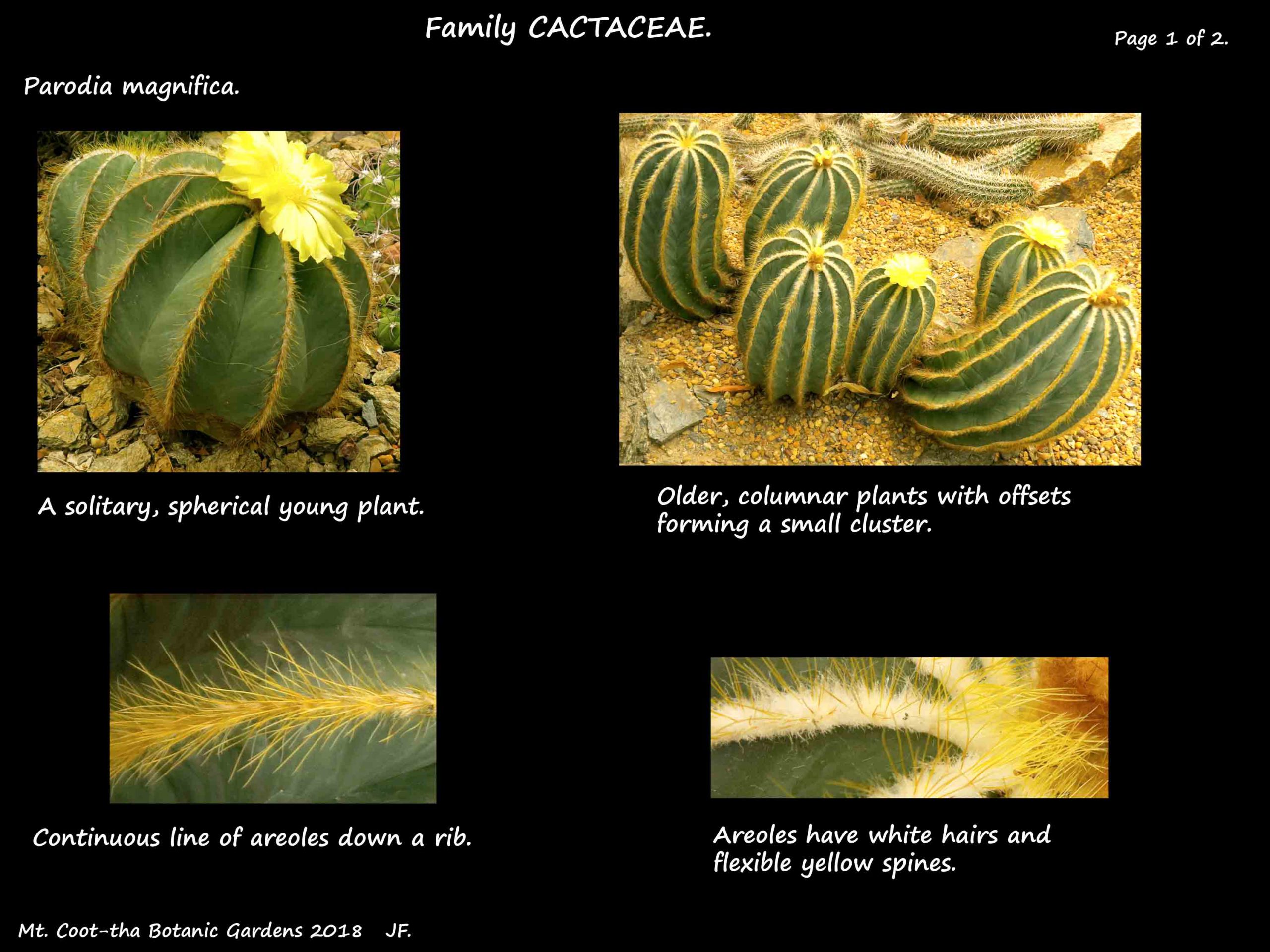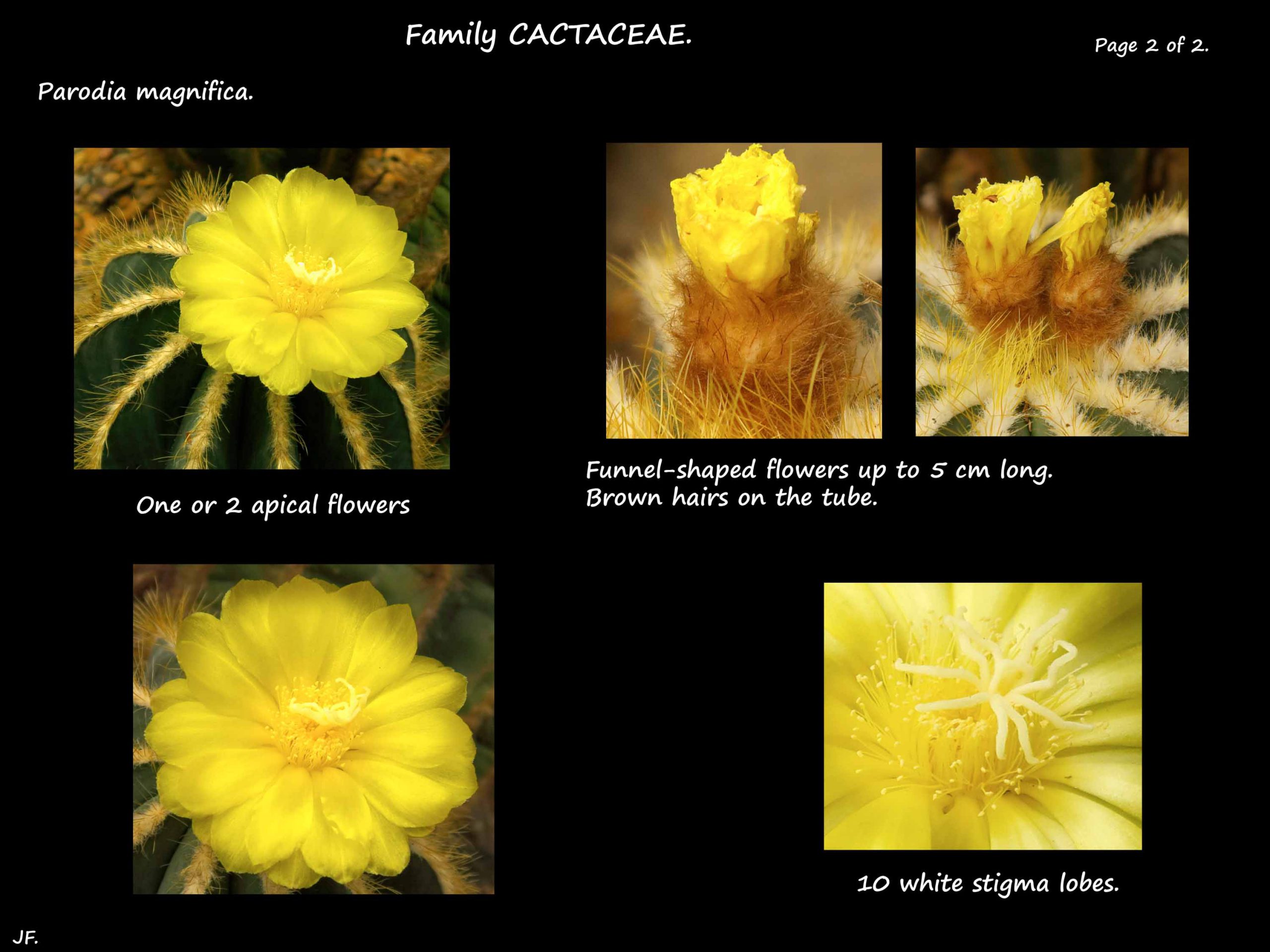Parodia.
Family Cactaceae > Subfamily Cactoideae > Tribe Notocacteae.
There are about 50 species that are native to South America.
Solitary or clumping, they are small spherical plants or columnar ones up to 1 m high.
They all have deep ribs that can be vertical or spiral around the stem.
The usually solitary, apical flowers are red or yellow with short, hairy or scaly tubes.
Parodia magnifica.
The Ball cactus is also seen under its old name of Eriocactus magnificus.
Young plants are spherical then become columnar as they grow.
They produce offsets and can form large clumps.
Dark to blue-green, sometimes with a waxy coating, they can be up to 30 cm high.
There are up to 15 deep, straight, narrow ribs that may become twisted at the top.
The areoles down the rib edges have short white then yellowish hairs.
The areoles are so close the hairs form a continuous pale line down the ribs.
Each areole has up to 15 flexible golden spines that are up to 2 cm long.
The yellow flowers at the apex are solitary or in pairs.
Funnel-shaped, they are around 5 cm long and wide.
The basal pericarpel and the longer hypanthium are densely covered in hairs.
There are numerous stamens with the pale yellow anthers held just above the throat.
The single style, longer than the stamens, has 10 white stigma lobes.
The pink, spherical fruit, up to 1 cm across, have reddish-brown seeds.
J.F.



